The ability to decode multisyllabic words in reading is (to me) equivalent to knowing basic multiplication and division facts. Multisyllabic words make up the foundation of many texts our students read, just like multiplication and division facts are embedded in so many grade level skills. And just like with basic math facts, our students need strategies for tackling words that they do not know with automaticity. This post will discuss why spending time teaching strategies for multisyllabic words is important, why multisyllabic words can be tricky for students, and a decoding multisyllabic words strategy that you can use in grades 4-5 (with a free teaching presentation and printables to help you introduce the strategy!)
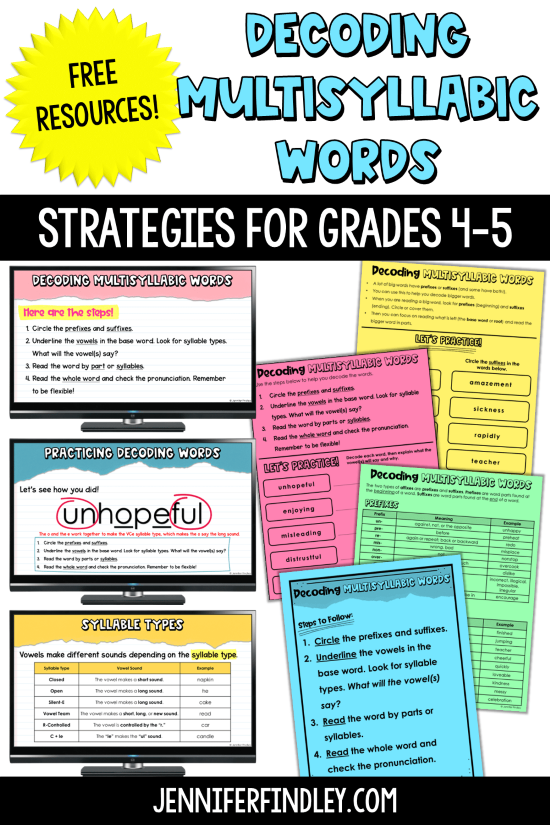
Why is Decoding Multisyllabic Words Important?
As a 4th or 5th grade teacher, pacing demands can make fitting in decoding strategies difficult. However, for many students, it is extremely important to fit it in. Here are some reasons.
Reason 1: Multisyllabic words are part of daily life/reading.
It is safe to say with one hundred percent certainty: students will encounter multisyllabic words in their everyday lives. There were seven in that last sentence alone! In order for students to become fluent readers, they must learn to decode all types of words- even really tricky ones.
Reason 2: Knowing how to decode multisyllabic words helps with comprehension.
Multisyllabic words often hold a lot of the meaning in texts. If students can decode the multisyllabic words they encounter and connect the word to a known word, this will increase understanding of what they read.
Check out this example story with only the beginning letters of the multisyllabic words included in the rest omitted. Can you answer the questions listed below the story?
Describe the missing food. What was it made of?
How did the narrator feel when he discovered his food was gone?
How is the narrator so sure that his aunt didn’t take his food?
What was the narrator’s brother doing during this time that makes him not a suspect?
Who does the narrator suspect took his food? Why?
Now, here is the full story. The questions are much easier to answer when you are able to read the multisyllabic words.
Giving students a strategy for reading multisyllabic words will make grade level texts more accessible and comprehensible.
Reason 3: Having strategies to read all types of words gives students confidence as readers.
When students are struggling with a skill, they usually know they are struggling. They can feel it. By teaching multisyllabic word decoding strategies, you are not only giving students the tools to read new words, but also the intrinsic motivation to keep reading and working on new skills.
Why is Decoding Multisyllabic Words Hard for Students?
Multisyllabic words are tricky for students for several reasons:
1. Multisyllabic words can challenge a student’s working memory.
When a student approaches a multisyllabic word that requires careful decoding, the student must: isolate the first syllable and sound it out, isolate the next syllable and sound it out, remember the sounds in the first syllable, blend with the second syllable, decide if his/her decoding makes sense, and then possibly self-correct. Throw in three or more syllables and it gets even trickier. A decoding strategy that helps students isolate affixes and identify and decode different syllable types can help speed up the decoding process and lower the cognitive load for students.
2. Vowel sounds get even trickier in multisyllabic words.
Vowels can be tricky by themselves, but in multisyllabic words, they can be even trickier. With vowels making different sounds depending on the syllable types and vowels flexing to the schwa, it can prove difficult for students.
3. Multisyllabic words can be visually intimidating.
When students are used to reading single-syllable words with phonic rules they know and understand, a longer word with several syllables can look like a lot. Students may see a long word and immediately decide that the word is too difficult.
When students have a multisyllabic word decoding strategy to use, the decoding process will not be as tricky as think (or intimidating).
What do Students Need to Know to Decode Multisyllabic Words?
Here are some important concepts and foundational skills that students need to know to successfully decode multisyllabic words in 4th and 5th grade:
- What a prefix and suffix is and how to identify them in words/isolate them from the base/root.
- Students must understand what a syllable is: part of a word that has only one vowel sound.
- Students must understand how to syllabicate (break a word into its syllable parts). Tip: Teach a flexible syllable division strategy that uses vowels to guide the breaks.
- That vowels can be short, long, a gliding vowel sound (diphthongs) or a schwa sound (uh or ih sound in an unstressed syllable)
- That vowel sounds can be made in a variety of ways (vowel teams, vCe, etc).
- That some vowel sounds are controlled by consonants (r-controlled).
- Syllable types to help them know what the vowels will say. Read more about syllable types and grab some free resources by clicking or on the image shown below.
Decoding Multisyllabic Words Strategy: Using Morphology and Syllable Types
And finally, let’s get to the decoding strategy…
A decoding strategy for multisyllabic words that works really for grades 4-5 is one that combines morphology (units of meaning) and syllable types (vowel patterns in words).
Here’s why:
- Identifying syllable types help students know how to read vowels. Read more about syllable types and grab some free resources here.
- Morphology eases the decoding burden by having students find prefixes and suffixes to help them chunk the word into meaningful units. Click here to read more about the power of teaching morphology and grab some free morphology resources here.
Here is one decoding strategy to use.
- Circle the prefixes and suffixes.
- Underline the vowels in the base word. Look for syllable types. What will the vowel(s) say?
- Read the word by parts or syllables.
- Read the whole word and check the pronunciation. Remember to be flexible!
Then when moving away from paper to pencil decoding, the strategy becomes:
- Cover the prefixes and suffixes. Students can use a post-it note scrap or their fingers.
- Find the vowels in the base word. Look for syllable types. What will the vowel(s) say?
- Read the word by parts or syllables.
- Read the whole word and check the pronunciation. Remember to be flexible!
Free Resource for Teaching the Multisyllabic Word Decoding Strategy
Do you need a resource to help you introduce this decoding strategy to your students? Click the image below for a free slideshow presentation and student reference sheets that you can use to teach your students how to decode multisyllabic words using affixes and syllable types (to know what the vowel will say). A pop-up will open and you can enter your email address.
The presentation walks students through the strategy with embedded practice along the way for each step and practice for tying the entire strategy together. The printable reference sheets pair perfectly with the presentation. The printables include practice words from the presentation and reference charts for the most common prefixes and suffixes.
Instructional Tips for After Using the Free Presentation
After teaching and practicing the strategy (using the free presentation), you can reinforce the strategy in several ways.
1. During read alouds, have several multisyllabic words from the text written on the markerboard or displayed for students. With the students, use the strategy to break the word down and decode it. You can model with student input or have students copy the word to a markerboard to complete the strategy themselves.
2. During small group instruction, follow the same procedures shared in tip #1 and select words from the text you are reading to model or decode as a group.
3. Have students complete the strategy with spelling or vocabulary words
4. Allow for explicit practice during reading centers or groups…Need practice printables or task cards specifically for this decoding strategy? Click here!
5. When teaching science and social studies content areas, select specific vocabulary words to analyze and break down using the decoding strategy.
6. Continually introduce and teach new affixes and roots. You can do this through Morphology Warmup Activities or specific daily routines that explicitly teach new affixes and roots in the context of connected text.
7. Remember to remind your students to be flexible and flex the sounds (especially flexing the vowel sounds from short to long to schwa).
8. Students may struggle to get a correct pronunciation if the students do not have the word in their speaking or listening vocabulary. Continue explicitly teaching grade level vocabulary.
Want Explicit Practice for the Decoding Strategy?
If you want to offer your students explicit practice that follows the decoding strategy shared in this post, check out this resource! It includes 50 carefully chosen words (with sentence contexts) for students to decode (using the strategy) and read. Digital and printable versions included! The free presentation is also included so you can have everything in one place!
Want Activities and Resources for Teaching Prefixes, Suffixes, and Roots?
Shop This Post
Reference:
Archer, A. L., Gleason, M. M., & Vachon, V. L. (2003). Decoding and fluency: Foundation skills for struggling older readers. Learning Disability Quarterly, 26(2), 89–101
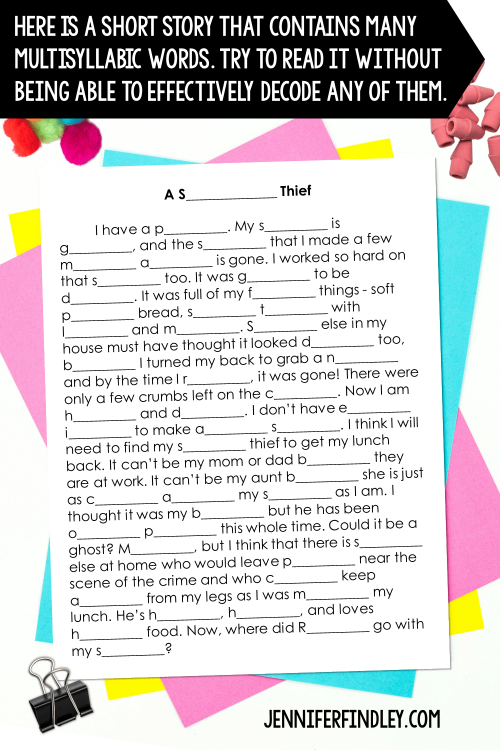
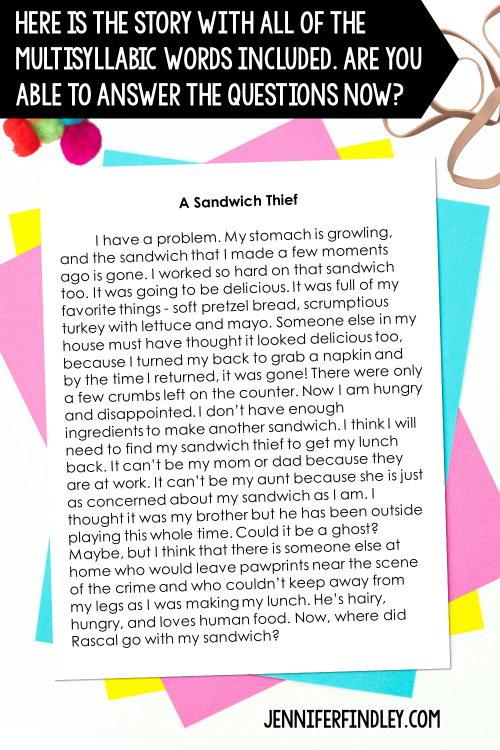
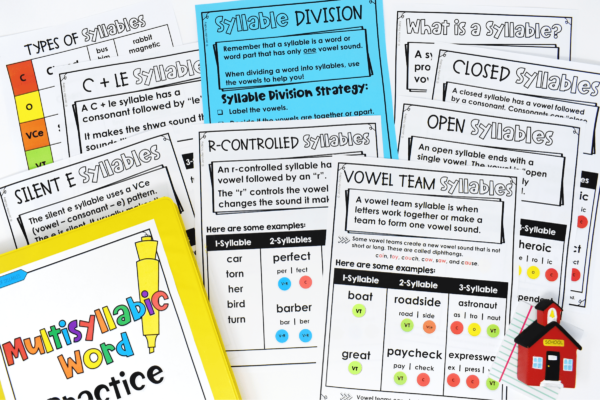
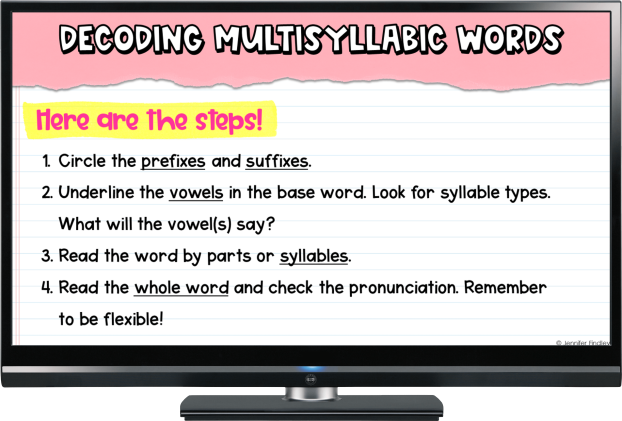
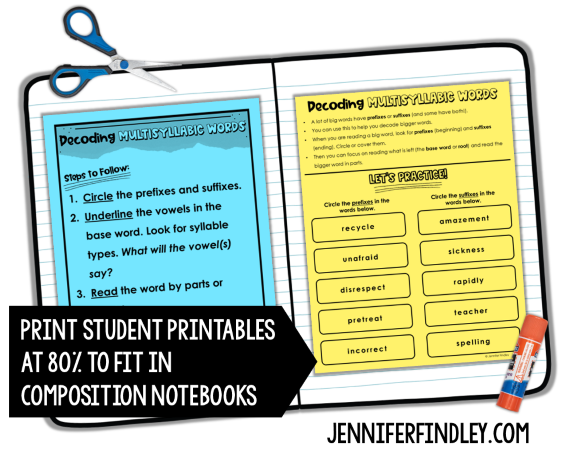

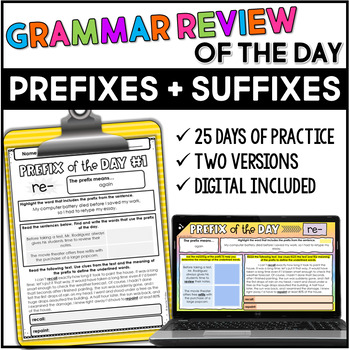
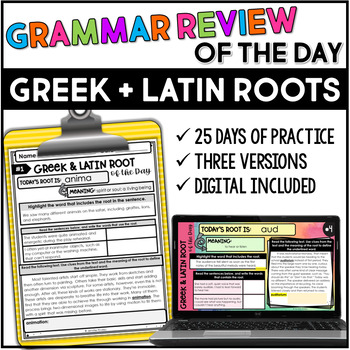
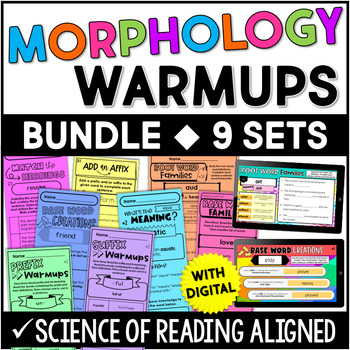







Do you know of any peer reviewed studies showing the effectiveness of this strategy? This is what I’m hoping to write about for my MA capstone project. Thanks!
Hi Linda, yes! https://www.jstor.org/stable/1593592